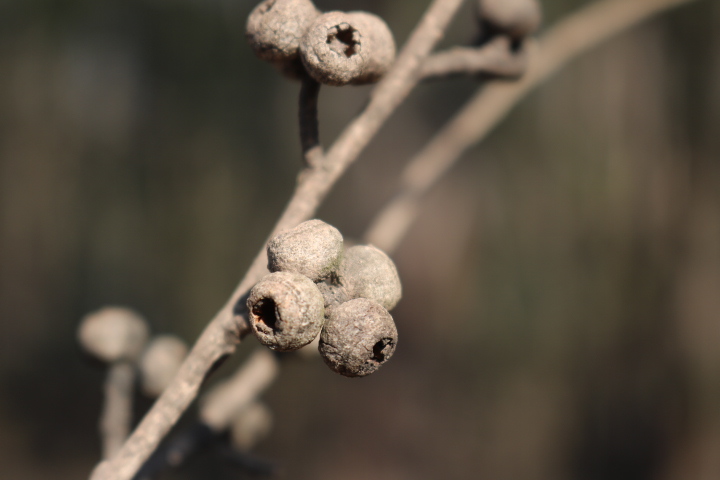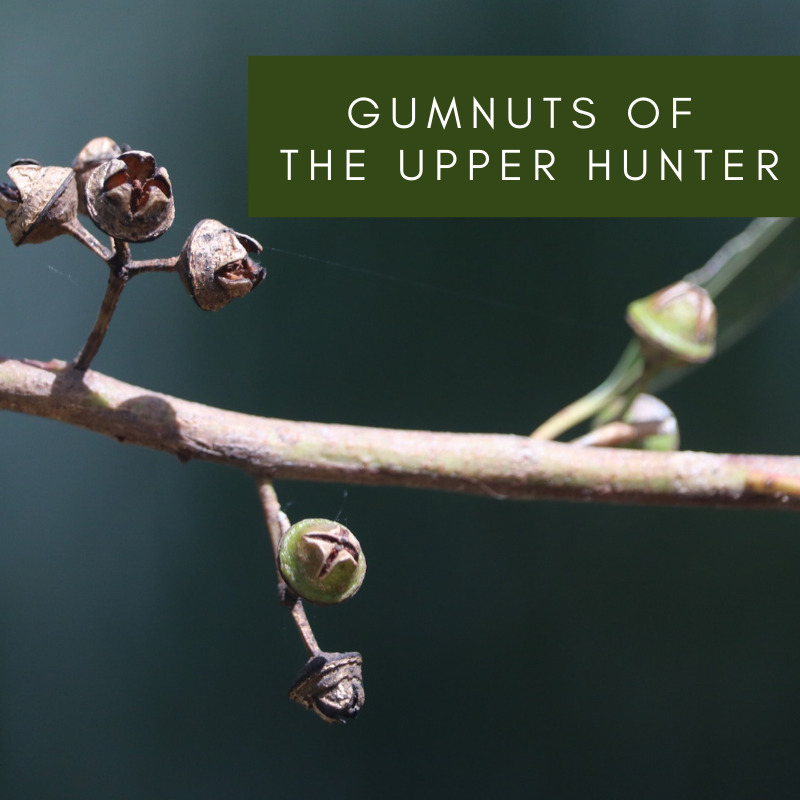Eucalypts are one of Australia’s iconic tree groups, it’s rare to find an area (outside of rainforests and treeless plains) that doesn’t have at least one representative. The Upper Hunter area (Upper Hunter and Muswellbrook Local Government Areas) is no exception with over 50 Eucalypts and close relatives (Corymbia, Angophora). Eucalypts in this region range in height from a couple of metres to 50-60m tall or more and play a very important ecological roles, providing nectar for birds, bats and insects, leaves for koalas and possums and nesting sites for myriads of creatures and in some areas play host to a myriad of epiphytic plants. Eucalypts have been exploited for their timber being used for construction, cabinetry, tool handles, oils, woodchip and firewood. Bark types and gumnuts (or “fruit”) are a handy way of determining which group a Eucalypt belongs to.

Eucalyptus camaldulensis

Stringybark

Corymbia maculata

Angophora floribunda

Eucalyptus melliodora
Content by Paul Melehan

